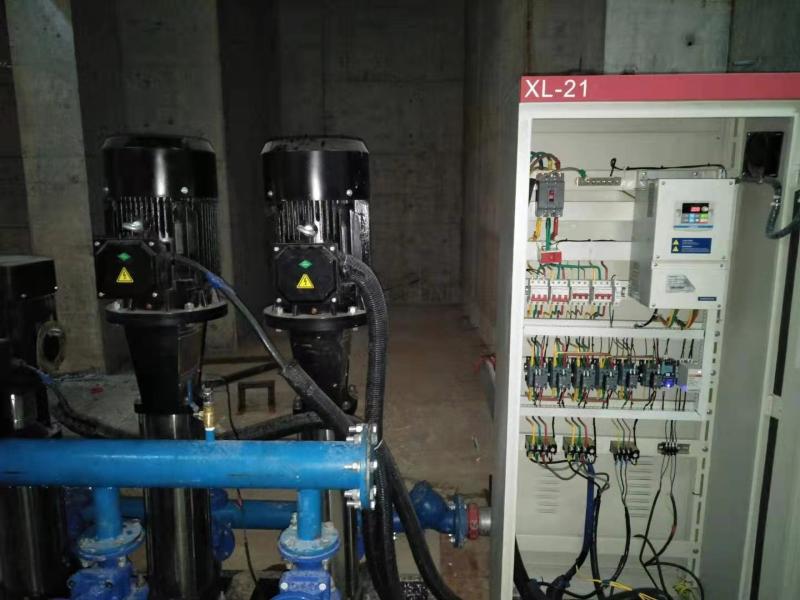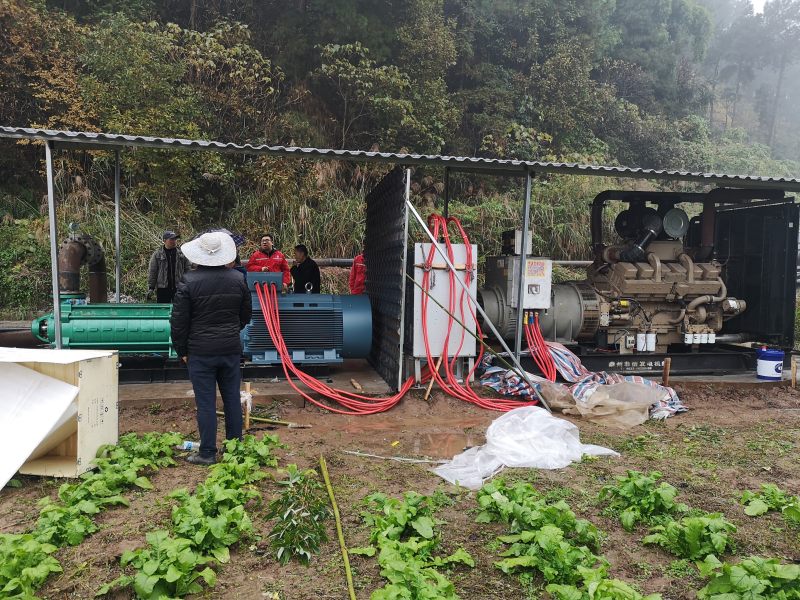

A variable frequency drive, or VFD, helps you change how fast a pump motor goes. You use a VFD for pump control to change speed and flow. This makes your system work better and gives you more choices. Many systems need VFDs to run smoothly and quietly. These systems are in HVAC, water treatment, and factories. The table below shows common uses:
Canroon gives you VFD solutions you can count on.
Key Takeaways
A Variable Frequency Drive (VFD) lets you change how fast a pump motor runs. This helps save energy and makes the system work better.
Using a VFD can save a lot of energy. It can cut power use by up to 60% by changing the pump speed.
VFDs help machines last longer. They lower stress on parts, so there are fewer breakdowns and less money spent on repairs.
These drives can be used in many places. They work in HVAC systems, water treatment, and farming. This makes systems smarter and more efficient.
Picking the right VFD means you need to think about flow rate, pressure, and the kind of fluid. This helps the system work its best and saves energy.
VFD for Pump Control

What Is a Variable Frequency Drive?
You use a variable frequency drive to control how fast a pump runs. This device changes the speed of the motor by adjusting the frequency and voltage of the electricity going to it. When you install a VFD for pump control, you get more control over how much water or fluid moves through your system. You can slow down or speed up the pump as needed. This helps you save energy and makes your system work better.
A variable frequency drive lets you match the pump speed to what your system needs. You do not have to run the pump at full speed all the time. This means you can use less power and reduce wear on your equipment.
Variable frequency drives play a big role in flow control. You can use them to change how much water flows through pipes or how much pressure builds up. Many industries use VFDs for pump control because they want to manage flow and pressure without wasting energy.
Canroon offers reliable VFD solutions. You can trust their products to help you get the most out of your pump control system.
How VFDs Work
When you use a VFD for pump control, you change the way the pump motor works. The VFD takes the electricity from your power supply and changes it in three main steps:
The VFD converts the AC power from your supply into DC power. It uses a rectifier to do this.
The VFD then changes the DC power back into AC power. This new AC power has a different frequency and voltage. The VFD sets these values to control how fast the pump motor spins.
The VFD uses sensors and a control system to watch things like flow and pressure. If your system needs more water, the VFD increases the frequency and voltage. If you need less, it lowers them. This keeps the pump running at the right speed for your needs.
A VFD adjusts the frequency of the power supply.
It modifies the voltage supplied to the motor.
This results in controlled speed and torque of the motor.
You get better flow control with VFDs. You can change the pump speed to match what your system needs. This helps you avoid wasting energy and keeps your equipment running longer.
You can use VFDs for pump control in many places. Water treatment plants, HVAC systems, farms, and factories all use VFDs to manage flow control and pressure. When you choose a VFD for pump control, you make your system smarter and more efficient.
Canroon provides a wide range of variable frequency drives. Their VFDs help you get the best performance from your pump. You can rely on Canroon for expert support and quality products.
Benefits
Energy Savings with VFDs
You can save a lot of energy when you use a VFD for your pump. VFDs let you adjust the speed of your pump motor, so you only use the power you need. When you slow down your pump by just 10%, you can cut power use by 27%. If you reduce the pump speed by 25%, you may see energy use drop by 60%. Many pump systems see average annual savings from 40% to 60%. Even a small change in speed can make a big difference in your electricity bill.
Here is a quick look at how VFDs help with reducing energy consumption and improving pumping efficiency:
Efficiency and Performance
You get better pump system efficiency when you use a variable speed drive. VFDs let you match the pump speed to what your system needs. This means you avoid wasting energy and keep your pump working at its best. In many cases, reducing pump speed by 20% can save up to 50% in energy. VFDs also give you soft-start and soft-stop features. These features lower stress on your pump and pipes, which helps prevent damage.
Here are some ways VFDs improve pump performance:
VFDs provide real-time adjustment for flow and pressure.
You get improved reliability and process control.
VFDs reduce noise and vibration, making your workplace more comfortable.
You see lower life-cycle costs and fewer emissions.
Canroon offers VFD solutions that help you with optimizing pump performance and variable speed control. Their products support pumping efficiency and keep your system running smoothly.
Equipment Life
When you use a VFD for your pump, you help your equipment last longer. VFDs reduce mechanical and electrical stress by letting your pump start and stop gently. This means less wear and tear on your pump, motor, and pipes. You spend less money on repairs and downtime. VFDs also protect your pump by keeping the system stable and matching speed to demand.
You can expect these benefits for your pump system:
Longer lifespan for pumps, motors, and pipes.
Fewer breakdowns and lower maintenance costs.
Reliable, long-lasting operation.
Canroon’s VFDs help you get the most out of your pump system. You can trust their expertise for reducing maintenance and optimizing pump performance.
Applications

Water Treatment
Variable frequency drives are used in water treatment plants. These plants need pumps to move water through each step. VFDs help control how fast centrifugal pumps go. This lets you match the flow to what is needed. VFDs are found in ultrafiltration and reverse osmosis. These processes need careful control to keep water clean.
Ultrafiltration uses pumps with VFDs for the right pressure.
Reverse osmosis uses VFDs to change pump speed for better results.
Cities often upgrade pumps with VFDs. One city saved 30% energy after adding VFDs. Another plant used VFDs for smart aeration and saved 66% energy for aeration and 17% overall. Some plants improved power factor and saved over 70% energy for aeration by using VFDs with other tools.
HVAC
VFDs are used in HVAC systems to control pumps. These pumps move water for heating and cooling. VFDs let you change pump speed for the right flow. This saves energy and lowers stress on equipment. If you slow the pump by 10%, you use 27% less power. Most HVAC systems save 15% to 45% energy with VFDs.
VFDs give better control of HVAC systems.
You spend less on fixing things because VFDs help find problems early.
Soft start features protect pumps and help them last longer.
Agriculture
Farmers use VFDs to control pumps for watering crops. You can set pump speed to match what your crops need. This saves energy and stops wasting water. VFDs let you change pump speed based on soil moisture. Your fields get just the right amount of water.
VFDs help save money on energy.
You avoid giving too much water and keep crops healthy.
Pumps last longer because VFDs lower stress.
Industry
Factories use VFDs with pumps to move liquids in many jobs. You can save a lot of energy by switching from constant speed to VFD control. Tests show VFDs can save up to 41% energy compared to constant speed pumps. Running pumps at 50-70% of top flow can save over 30% energy.
VFDs make pump systems smarter and more efficient in every industry.
Choosing Variable Frequency Drives
Selecting the Right VFD
When you pick a vfd for your pump, you need to think about a few things. You want your pump to work well and use less energy. First, check how much flow and pressure your pump needs. Think about what kind of fluid your pump moves. Some fluids need special care, so your vfd should fit those needs. Look at what your system needs and make sure the vfd works in your pump’s environment.
Fluid type
System needs
Saving energy
Easy to fix and reliable
Saving energy is very important. If you choose a vfd that matches your pump, you can spend less money on power. You should also check your pump’s details, like how much load and torque it needs. Your vfd must handle the speed and torque your pump uses. Look at how much electricity your pump uses and its performance before you choose.
Tip: The right vfd helps your pump work smoothly and saves you money on your energy bill.
Canroon VFD Solutions
Canroon has many vfd products for pump control. You can find models with quick speed torque response, air cooling, and built-in PID control. These vfds have RS485 communication, so you can connect them to your system easily. Canroon’s vfds are small and have high power density. You get steady speed accuracy and features that save energy.
Canroon helps you with installation and maintenance. Their team can help with wiring, setup, and connecting your system. You can get help with fixing problems and regular checks to keep your pump and vfd working well. Canroon’s support team is always ready to help you, day or night.
You can make your pump system smarter and save money by using a vfd. Many people think vfd devices are only for large or three-phase motors, but you can use them for many pump types. With a vfd, you control pump speed, reduce energy use, and extend equipment life.
You can improve flow control and lower costs by matching pump speed to your needs.
If you want to learn more, you can find training modules and courses on pump and vfd topics. For expert help, contact Canroon for solutions that fit your pump system.
Choose the right location and size for your pump and vfd.
Keep your pump system clean and inspect it often.
Use built-in diagnostics to monitor pump performance.
FAQ
What does a VFD do for a pump?
A VFD lets you change the speed of your pump motor. You can control how much water or fluid moves. This helps you save energy and makes your system work better.
Can you use VFDs with any pump?
You can use vfds with most pumps, like centrifugal and positive displacement pumps. Always check your pump type and system needs before installing a VFD.
How do VFDs help save money?
You use less electricity when you slow down your pump with a VFD. Lower energy use means smaller bills. You also spend less on repairs because your equipment lasts longer.
Do VFDs need special maintenance?
You should keep your VFD clean and check it often. Look for dust or loose wires. Regular checks help your VFD and pump work well and last longer.
Sign up for updates
